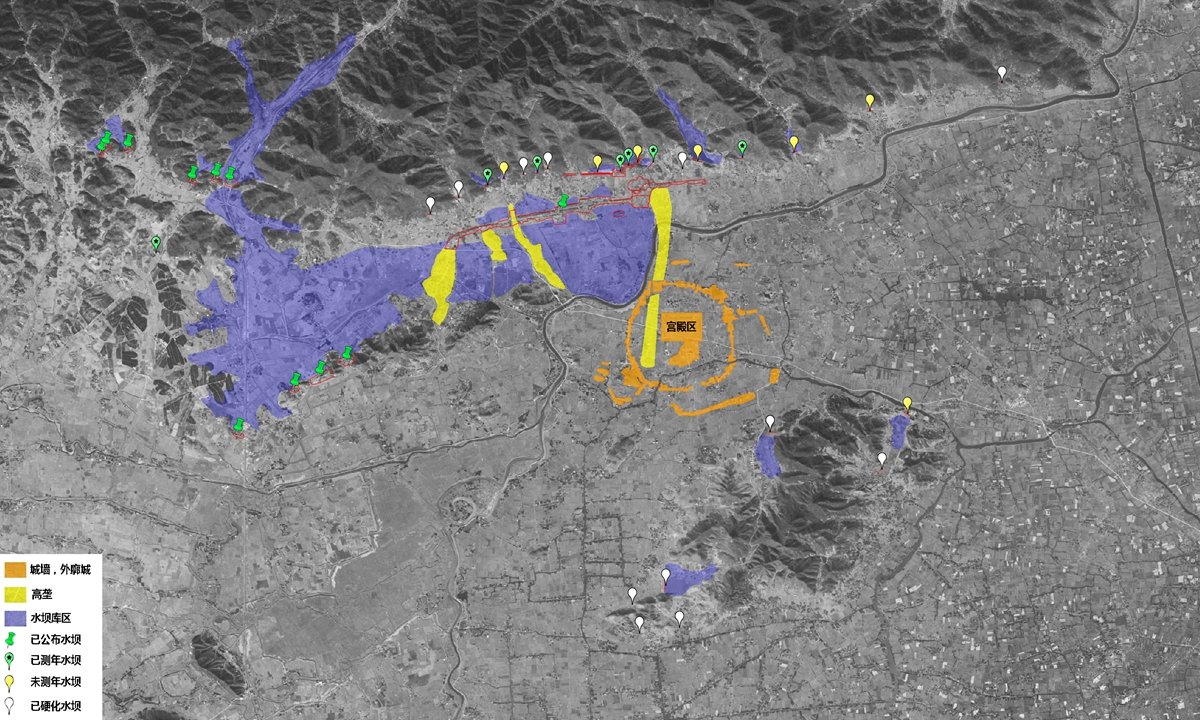Recent archaeological investigations at the Liangzhu Ruins in East China’s Zhejiang Province have uncovered about 20 ruins, believed to be ancient dams. These finds are poised to revolutionize our understanding of water management systems in early Chinese civilizations. The discoveries were announced at a conference by China’s National Cultural Heritage Administration, marking a leap forward in the nation’s archaeological research, particularly in the study of ancient hydrological systems.
Wang Ningyuan, a research expert from the Zhejiang Provincial Institute of Cultural Relics and Archaeology, provided insights into these groundbreaking findings. Supported by the “Archaeology China” national project and a project exploring the origins of Chinese civilization, these discoveries have shed light on the developmental trajectory of the Liangzhu Ruins. The evolution from scattered settlements to a sophisticated urban center with an intricate water management system is now clearer.
The Liangzhu culture is divided into three distinct periods: early, middle, and late. A notable transition in social dynamics is evident through the study of tombs and artifacts. Initially, the Liangzhu society appeared to have a significant female influence, as seen in the early high-ranking tombs predominantly occupied by females and accompanied by unique dragon-shaped bracelets. However, this influence gradually shifted to a male-dominated structure in later periods, as evidenced by the prevalence of male tombs and artifacts featuring divine beings and mythical creatures.
During the early stage of the Liangzhu culture, extensive research at sites like North Village and Nanwang Temple revealed new insights into the distribution of settlement clusters. The North Village site, in particular, yielded eight noble tombs, with a staggering 95% of the findings being jade artifacts. Tomb M106 stood out as the most significant early Liangzhu female tomb, housing 72 burial items, including 66 jade pieces. These items, made of nephrite jade, included coronets, jade pendants, dragon-shaped bracelets, and conical objects.
The discovery of approximately 20 dam-like ruins around the ancient city of Liangzhu marks a significant advancement in understanding the region’s middle-phase water conservancy systems. Seven of these ruins, dating back about 5,000 years, align chronologically with 11 previously discovered dams, offering new perspectives on the layout and infrastructure of the ancient city.
These discoveries not only underline the importance of water management in early Chinese civilizations but also highlight China’s status as a civilization deeply connected to water conservancy. Focused studies in this field are crucial for advancing archaeological research into ancient hydrological systems.
The Liangzhu Ruins have garnered international acclaim, recognized as a testament to the existence of Chinese civilization at least 5,000 years ago. The conference also shed light on other significant archaeological findings, including research on the origin and spread of the Austronesian language family.
Zhou Zhenyu, a researcher at the Institute of Archaeology, Chinese Academy of Social Sciences, emphasized the impact of these findings. The research refines the spatio-temporal framework of the archaeological culture along China’s southeastern coast. It reveals the evolutionary journey of prehistoric populations that developed ocean-related cultural characteristics, affirming the diverse yet unified nature of Chinese civilization.
Zhou highlighted that despite the lack of direct archaeological cooperation between the Chinese mainland and Taiwan, there has been a decade of robust academic exchange. The archaeological accomplishments in both regions complement and enhance each other’s understanding. For instance, early agricultural and maritime developments from the Chinese mainland influenced Taiwan, evolving distinctly. The mainland’s archaeological findings lay the groundwork for Austronesian studies in Taiwan, while Taiwan’s archaeological results help refine the historical narratives of Austronesian development in later periods.
READ MORE:
